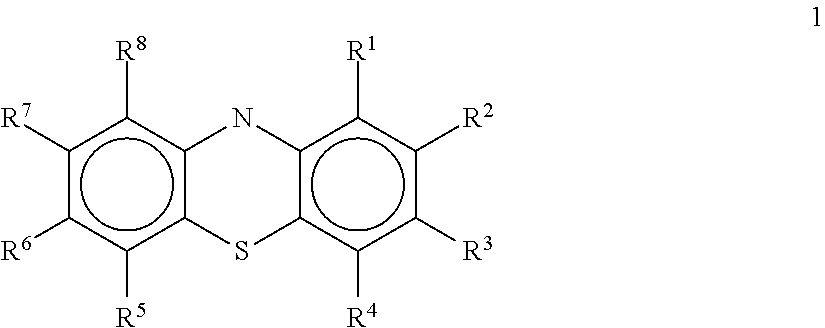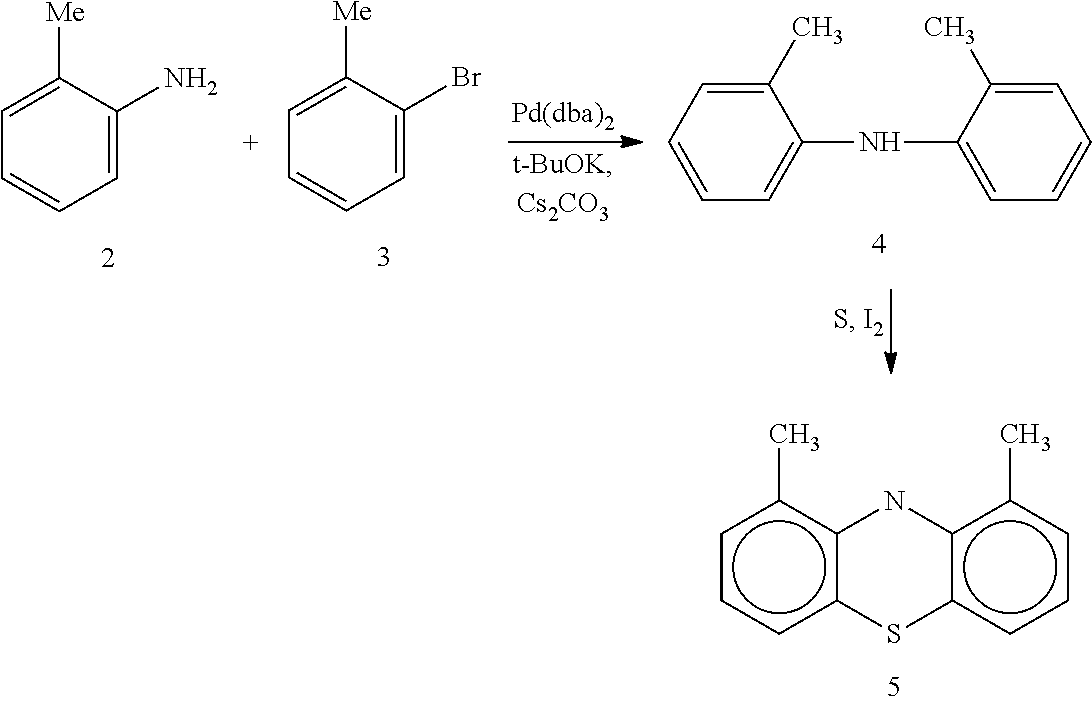Antiviral compounds
a technology of antiviral compounds and compounds, applied in the field of compounds for preventing and treating viral infections, can solve the problems of affecting the effect of antiviral treatment, affecting the safety of patients, and causing toxic effects for a long tim
- Summary
- Abstract
- Description
- Claims
- Application Information
AI Technical Summary
Benefits of technology
Problems solved by technology
Method used
Image
Examples
Embodiment Construction
[0016]In one embodiment, the present invention provides compounds, compositions, and methods for treating various viruses. In a first aspect, the present invention provides compounds having the structure:
[0017]
and their pharmaceutically acceptable salts, hydrates, and coordination compounds. R1, R2, R4, R5, R7, and R8 are selected independently from the group consisting of: hydrogen, halo, cyano, nitro, thio, amino, carboxyl, formyl, and optionally substituted alkyl, alkylcarbonyloxy, arylcarbonyloxy, heteroarylcarbonyloxy, cycloalkylcarbonyloxy, cycloheteroalkylcarbonyloxy, aralkycarbonyloxy, heteroaralkylcarbonyloxy, (cycloalkyl)alkylcarbonyloxy, (cycloheteroalkyl)alkylcarbonyloxy, alkylcarbonyl, arylcarbonyl, heteroarylcarbonyl, cycloalkycarbonyl, cycloheteroalkycarbonyl, aralkylcarbonyl, heteroaralkylcarbonyl, (cycloalkyl)alkylcarbonyl, (cycloheteroalkyl)alkylcarbonyl, alkylaminocarbonyl, arylaminocarbonyl, aralkylaminocarbonyl, heteroarylaminocarbonyl, heteroaralkylaminocarbony...
PUM
| Property | Measurement | Unit |
|---|---|---|
| concentration | aaaaa | aaaaa |
| volumes | aaaaa | aaaaa |
| pH | aaaaa | aaaaa |
Abstract
Description
Claims
Application Information
 Login to View More
Login to View More - R&D
- Intellectual Property
- Life Sciences
- Materials
- Tech Scout
- Unparalleled Data Quality
- Higher Quality Content
- 60% Fewer Hallucinations
Browse by: Latest US Patents, China's latest patents, Technical Efficacy Thesaurus, Application Domain, Technology Topic, Popular Technical Reports.
© 2025 PatSnap. All rights reserved.Legal|Privacy policy|Modern Slavery Act Transparency Statement|Sitemap|About US| Contact US: help@patsnap.com



